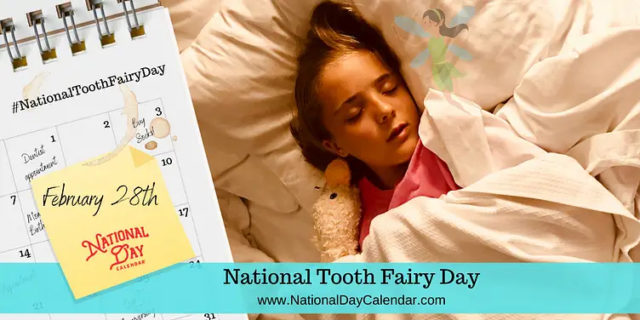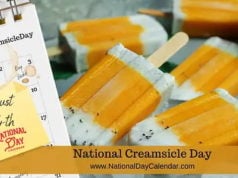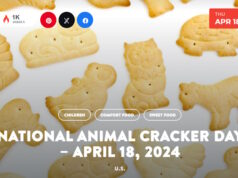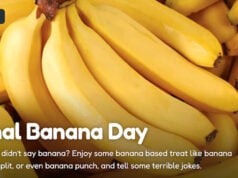
February 28th, National Tooth Fairy Day encourages us to take look back on the history of one of the dental care’s little helpers. It’s one way our children develop good dental hygiene.
Download this coloring page to celebrate!
- Like toothpaste, today that advertises fruity flavors and sparkles to get kids excited to brush their teeth, in 1925 it was probably quite a bit more difficult considering the pastes were mostly peroxide and baking soda. One advertisement was for a Fairy Wand Tooth Whitener. This product promised to brush away cigarette and coffee stains. The ad was aimed at both children and adults.
- Then in 1927, Esther Watkins Arnold printed an eight-page playlet for children called The Tooth Fairy. It was the same year Sir Arthur Conan Doyle “proved” his claim that fairies and gnomes are real and “verified” with pictures of two little girls surrounded by fairies. The world was ripe with imagination and primed to have a tooth fairy about to come collect the lost teeth of little boys and girls and leave a coin or two behind.
- She (or he) started leaving nickels and dimes under the pillows of sleeping children. Over the years there have been variations on the theme.
- In 1942, in an article written by columnist Bob Balfe in the Palm Beach Post, his children received War Stamps to put in their books when they lost a tooth. It was a popular alternative during a time when giving to the war effort was a motivating factor.
- When compared to Santa Claus, who dates back to ancient history, the Tooth Fairy only dates back to the early 1900s. She was first mentioned in an article in the Chicago Daily Tribune’s “Household Hints” column from September 1908.
- The Tooth Fairy collects about 300,000 teeth from children all over the world every night. It’s believed that the Tooth Fairy uses these teeth to build the fairy community where she lives.
- She visits each child around 20 times! Children have 20 baby teeth that will fall out over the span of a few years. As long as each tooth is left under the pillow, the Tooth Fairy will find it!
- Here in America, the Tooth Fairy is most commonly a tiny creature sporting a crown, a wand, and a poofy gown. However, in Spain, France, and Belgium the Tooth Fairy is a small mouse that collects lost teeth in exchange for a small gift.
- The Tooth Fairy in 2022 hides a record-setting average of $5.36 per lost tooth under the pillow, according to the annual Original Tooth Fairy Poll®. That’s an all-time high in the 24-year history of the poll and a price increase of 14% compared to last year’s payout, almost twice the current inflation rate.
- Delta Dental has analyzed the Tooth Fairy’s U.S. annual giving trends since 1998. The newly disclosed value of a lost tooth has quadrupled since its initial value of $1.30.
- In the 13th century, Islamic scholar Ibn Abi el-Hadid referenced the Middle Eastern tradition of throwing a baby tooth into the sky (or “to the sun”) and praying for a better tooth to replace it.
- Throwing teeth is a common practice: In Turkey, Mexico, and Greece, children traditionally toss their baby teeth onto the roof of their house.
- In India, Korea, Vietnam, and the Philippines, lower teeth are thrown upward but teeth from the upper jaw are thrown to the floor, to encourage the new adult teeth to grow straight.
- Traditions aren’t always sunny, though—Norwegian and Finnish children are warned of Hammaspeikko, the “tooth troll” who comes for children who don’t brush.
- Burying the Tooth – Kids in Afghanistan bury lost teeth in a mouse hole, while parents in Turkey bury their children’s baby teeth in a place they think will bring their child success.
- Placing It in a Slipper – In the country of South Africa, a lost tooth is placed in a slipper. A magical mouse takes it from the slipper and leaves a gift.
- In a Glass – In Argentina, children put missing teeth in a glass by their bed and hope they’ll get a coin or candy in its place.
- The Tooth in a Box – Most people in Mexico place a lost baby tooth into a small box next to a child’s bed. The legend is that a magical mouse will come to collect the tooth and leave some coins behind.
Sources
Buckeye Pediatric Dentistry Ohio












